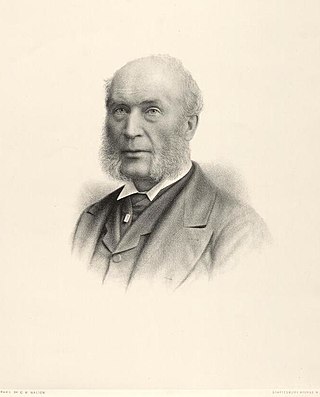The British Science Association (BSA) is a charity and learned society founded in 1831 to aid in the promotion and development of science. Until 2009 it was known as the British Association for the Advancement of Science (BA). The current Chief Executive is Hannah Russell. The BSA's mission is to get more people engaged in the field of science by coordinating, delivering, and overseeing different projects that are suited to achieve these goals. The BSA "envisions a society in which a diverse group of people can learn and apply the sciences in which they learn." and is managed by a professional staff located at their Head Office in the Wellcome Wolfson Building. The BSA offers a wide variety of activities and events that both recognise and encourage people to be involved in science. These include the British Science Festival, British Science Week, the CREST Awards, For Thought, The Ideas Fund, along with regional and local events.

Sir Henry Thomas De la Beche KCB, FRS was an English geologist and palaeontologist, the first director of the Geological Survey of Great Britain, who helped pioneer early geological survey methods. He was the first President of the Palaeontographical Society.

Sir William Boyd Dawkins was a British geologist and archaeologist. He was a member of the Geological Survey of Great Britain, Curator of the Manchester Museum and Professor of Geology at Owens College, Manchester. He is noted for his research on fossils and the antiquity of man. He was involved in many projects including a tunnel under the Humber, a Channel Tunnel attempt and the proving of coal under Kent.

Mason Science College was a university college in Birmingham, England, and a predecessor college of the University of Birmingham. Founded in 1875 by industrialist and philanthropist Sir Josiah Mason, the college was incorporated into the University of Birmingham in 1900. Two students of the college, Neville Chamberlain and Stanley Baldwin, later went on to become prime ministers of the United Kingdom.

Sir Richard John Griffith Bt. FRS FRSE FGS LLD, was an Irish geologist, mining engineer and chairman of the Board of Works of Ireland, who completed the first complete geological map of Ireland and was the author of the valuation of Ireland; subsequently known as Griffith's Valuation.

Gabriel Auguste Daubrée MIF FRS FRSE was a French geologist, best known for applying experimental methods to structural geology. He served as the director of the École des Mines as well as the president of the French Academy of Sciences.

Sir Warington Wilkinson Smyth was a British geologist.

Sir Albert Charles Seward FRS was a British botanist and geologist.

John Wesley Judd was a British geologist.
Prof William Whitehead Watts FRS HFRSE FGS FMS LLD was a British geologist.

The Royal Geological Society of Cornwall is a geological society originally based in Penzance, Cornwall in the United Kingdom. It was founded in 1814 to promote the study of the geology of Cornwall, and is the second oldest geological society in the world, after the Geological Society of London which was founded in 1807.
Sir Arthur Elijah Trueman was a British geologist.
The Wernerian Natural History Society, commonly abbreviated as the Wernerian Society, was a learned society interested in the broad field of natural history, and saw papers presented on various topics such as mineralogy, plants, insects, and scholarly expeditions. The Society was an offshoot of the Royal Society of Edinburgh, and from its beginnings it was a rather elite organization.

John Graham Ramsay was a British structural geologist who was a professor at Imperial College London, the University of Leeds and the University of Zurich.
Herbert Harold Read FRS, FRSE, FGS, was a British geologist and Professor of Geology at Imperial College. From 1947-1948 he was president of the Geological Society.

Peter John Bell Clarricoats was a British engineer who was Professor of Electronic Engineering at Queen Mary, University of London.
Richard Hugh Sibson is a New Zealand structural geologist and emeritus professor at the University of Otago, who has received numerous honors and awards for his work in the field of earthquake research. He has caused a 'fundamental shift' in the interpretation of the relationship between earthquakes and fault zone geology and on the origin of fault-hosted mineral deposits.

















